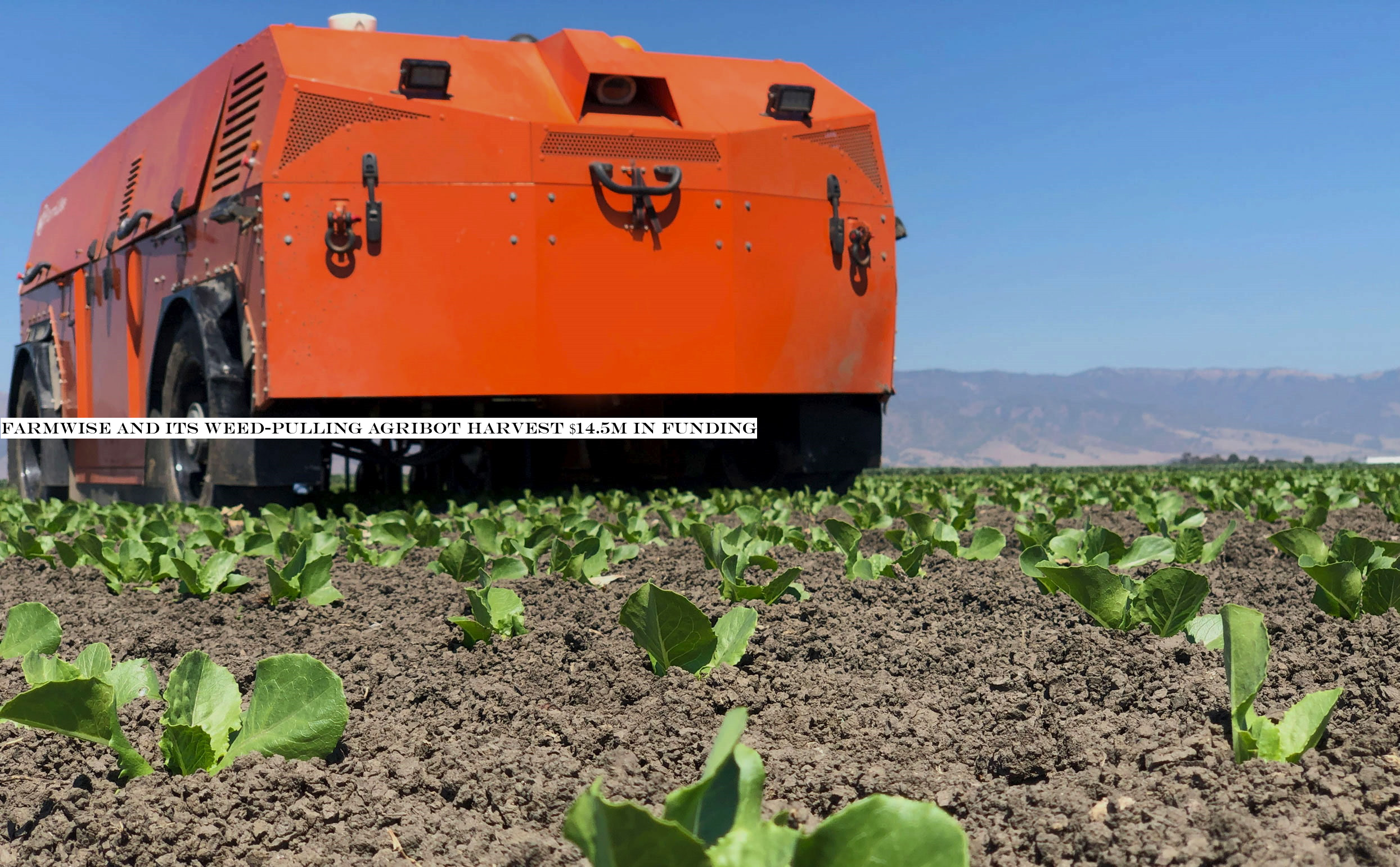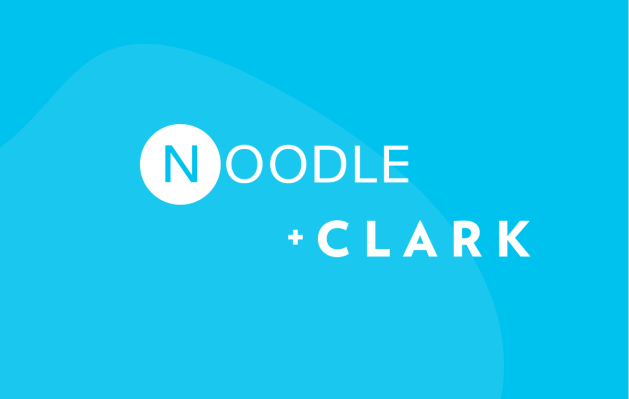Music
Trailers
DailyVideos
India
Pakistan
Afghanistan
Bangladesh
Srilanka
Nepal
Thailand
StockMarket
Business
Technology
Startup
Trending Videos
Coupons
Football
Search
Download App in Playstore
Download App
Best Collections
Technology

With Microsoft embracing Linux ever more tightly, might it do the heretofore unthinkable and dump the NT kernel in favor of the Linux kernel? No, I&m not ready for the funny farm. As it prepares Windows 11, Microsoft has been laying the groundwork for such a radical release.
I&ve long toyed with the idea that Microsoft could release a desktop Linux. Now I&ve started taking that idea more seriously — with a twist. Microsoft could replace Windows& innards, the NT kernel, with a Linux kernel.
It would still look like Windows. For most users, it would still work like Windows. But the engine running it all would be Linux.
To read this article in full, please click here
- Details
- Category: Technology
Read more: Call me crazy, but Windows 11 could run on Linux
Write comment (98 Comments)
Automating agriculture is a complex proposition given the number and variety of tasks involved, but a number of robotics and autonomy companies are giving it their best shot. FarmWise seems to have impressed someone — it just raised $14.5 million to continue development of its autonomous weeding vehicle.
Currently in the prototype stage, these vehicles look like giant lumbering personnel carriers or the like, but are in fact precision instruments which scan the ground for invasive weeds among the crop and carefully pluck them out.
&Each day, one FarmWise robot can weed crops to feed a medium-sized city of approximately 400,000 inhabitants,& said FarmWise CEO Sebastien Boyer in a press release announcing the latest funding round. &We are now enhancing the scale and depth of our proprietary plant-detection technology to help growers with more of their processes and on more of their crops.&
Presumably the robot was developed and demonstrated with something of a specialty in one crop or another, more as a proof of concept than anything.
Well, it seems to have proved the concept. The new $14.5 million round, led by Calibrate Ventures, is likely due to the success of these early trials. This is far from an easy problem, so going from idea to nearly market-ready in under three years is pretty impressive. Farmers love tech — if it works. And tiny issues or error rates can lead to enormous problems with the vast monoculture fields that make up the majority of U.S. farms.
The company previously took in about $5.7 million in a seed round, following its debut on Alchemist Acceleratordemo day back in 2017. Robots are expensive!
Hopefully the cash infusion will help propel FarmWise from prototype to commercialization, though ithard to imagine they could build more than a handful of the machines with that kind of money. Perhaps they&ll line up a couple big orders and build on that future revenue.
Meanwhile they&ll continue to develop the AI that powers the chunky, endearing vehicles.
&Looking ahead, our robots will increasingly act as specialized doctors for crops, monitoring individual health and adjusting targeted interventions according to a cropindividual needs,& said Boyer. So not only will these lumbering platforms delicately remove weeds, but they&ll inspect for aphids and fungus and apply the necessary remedies.
With that kind of inspection they can make a data play later — what farmer wouldn&t want to be able to digitally inspect every plant in their fields?
- Details
- Category: Technology
Read more: FarmWise and its weed-pulling agribot harvest $14.5M in funding
Write comment (94 Comments)
GoCardless, the London fintech that aims to become the one-stop shop globally for businesses that want to let customers pay via recurring bank payments, has launched a U.S. debit solution.
The company has also opened an office across the pond in San Franciscofinancial district, headed up by Andrew Gilboy, general manager, North America, who was previously the companychief revenue officer.
Specifically, GoCardless& new U.S. product supports debit payments on the ACH (Automated Clearing House) network. This means that businesses can use the GoCardless platform to offer U.S. consumers the option to pay by recurring bank payments, as an alternative to a credit card, for example. Likewise, companies can use GoCardless for debit payments for B2B transactions, such as relating to SaaS subscriptions, invoices or installments.
It is the B2B use case where GoCardless thinks there is the biggest opportunity for recurring payments, since, unlike in the U.K., for example, the biggest competitor would be writing cheques. Thatcostly and slow by 2019 standards and doesn&t provide anything like the visibility that direct debits and ACH affords.
&By using the ACH debit network on the GoCardless platform, merchants can pull payments directly from their customers& bank accounts, at a lower cost than credit cards and without the overhead and burden of cash and cheques,& says the U.K.-headquartered company.
GoCardless adds that businesses using the GoCardless ACH debit solution gain increased visibility over payment flow via a &fully automated& collection system. This includes things like due dates, and whether or not a payment was successful or failed and why.
The addition of ACH debit means that GoCardless& global debit network now covers more than 30 countries accessible through a single API and platform.
Meanwhile, the 2011-founded company is no stranger to the West coast of America. In its formative years, the U.K. startup went through Silicon Valley accelerator Y Combinator, where it initially struggled to find product-market fit before successfully pivoting to recurring payments.
If you happen to bump into GoCardless CEO Hiroki Takeuchi, ask him about the time he and his co-founders stayed up all night working the phones in a bid to win the startupfirst U.K. customers, lest they have nothing to show at YC Demo Day.
Now backed by the likes of Google Ventures, Salesforce and Accel, amongst others, the company has come a long way since then.
- Details
- Category: Technology
Read more: GoCardless launches US debit payments solution and opens San Francisco office
Write comment (93 Comments)We face two major threats today: one to the health of our planet and the other to our own. The U.N. says the global population will hit 9.7 billion by 2050, meaning more people consuming more natural resources than at any point in human history. Consumption is already doubling every 10-12 years. Add to that the challenges of a warming planet. On the human health front, some 30% of young people under age 20 are obese, 31% of deaths are from cardiovascular disease, and cancer cases are growing at a rate twice as fast as the population.
Fortunately, biology and technology are creating fixes for the planet as well as for the human body. As they do so, they are poised to reinvent countless industries, giving rise to what I believe is a golden age for biology as technology. As Arvind Gupta, the founder of health-science accelerator IndieBio, argued in one recent Mediumpost, &the twin catastrophes of planetary and human health& will create a $100 trillion opportunity.
Before I tell you how, here is an extremely brief history of the field. Biology, of course, is the original technology. Our tinkering with lifebuilding blocks, and our ancestormanipulation of plants and herbs as medicines and their use of neem branches as toothpaste or the cultivation of plants like corn has been going on for millennia. It wasn&t until the 1970s and 1980s that we saw the first flowering of todaymodern biotech industry.
In 1972, Robert A. Swanson helped launch the birth of biotech when he co-founded Genentech, which became a pioneer in the field of recombinant DNA technology. By creating novel DNA sequences in the lab, Genentech was able to synthesize human insulin for diabetics (1982), and create growth hormones for kids who suffered from a hormone deficiency (1985).
Among the other early leaders in the field was Applied Molecular Genetics (today known as Amgen). In 1989, it won approval for the first recombinant human erythropoietin drugs to treat anemia in people with chronic kidney failure, and later to treat anemia in HIV patients. Last year, the $23.75 billion companybest-selling drugs were Neulasta, used to prevent infections in cancer patients undergoing chemotherapy, and Enbrel, to treat some autoimmune diseases.
Startups working in these fields are creating entirely new industries, disrupting others and bringing us into what I believe is a golden era of biology as technology.
Today, innovative researchers are building on those early technologies. Among the most promising is the discovery of the CRISPR-Cas9 gene-editing technique. Using what they refer to as molecular scissors, scientists can use CRISPR to edit a living personDNA, deleting or repairing damaged sections. Because the changes are made at the genome, the DNA fix is hereditary, unlike previous fixes that affect only the individual patient. The technique promises to slow if not eradicate cancer. It could also prevent sickle cell disease, cystic fibrosis, hemophilia and heart disease.
Notwithstanding the concern over creating designer babies (and the recent controversial creation of the first gene-edited babies in China), it promises to fortify our bodies for us, those of our kids and all succeeding generations. Co-founded by Jennifer Doudna, a leader in the CRISPR field, Mammoth Biosciences is on a mission to leverage the power of CRISPR to democratize disease detection by bringing accurate and affordable testing out of the laboratory and into the point-of-care.
Other technologies, like DNA sequencing, cell engineering and bioprinting, have led to the creation of animal-free protein products, bio fuels for jet engines, lightweight materials stronger than steel and even memory for computer storage. As a result, startups working in these fields are creating entirely new industries, disrupting others and bringing us into what I believe is a golden era of biology as technology.
One successful company is Beyond Meat, which bills itself as the future of protein. With its plant-based meat product, it is trying to address our global populationneed for protein while also tackling the cow problem (they consume land and water and destroy the ozone with their flatulence, not to mention some people think eating them is wrong). The companywork promises to disrupt the $270 billion global meat industry.
The entrepreneurs at New Culture are also tackling the cow issue. They are using an engineered version of bakeryeast to make cheese without milk. Unlike other vegan cheeses, made from soy or nuts, this one has been praised as tasting like the real thing.

Another area ripe for disruption is our home. The startup Lingrove is trying to lessen our reliance on trees, and the deforestation that comes with it, by creating wood products with flax fiber and bio-epoxy resin. With its Ekoa TP product, Lingrove is targeting the $80 billion interior market, with an eye toward using its products in the construction industry. Another player in this field is bioMASON. The making of concrete contributes massive amounts of carbon to the air. But this company has shown it can &grow& bricks and masonry from sand without using a traditional heating-blasting-process, by infusing the sand with microorganisms that initiates a process like the one that creates coral.
Thereno telling where this golden age of biology as technology will lead.
And then theretransportation, the No. 1 global contributor of greenhouse gasses. Companies like Amyris are trying to do away with fossil fuels by turning genetically engineered yeast (i.e. sugar) into environmentally friendly gas and jet fuel.
And thatnot all. There are many more biology as technology stories, with innovative companies doing things like turning mushrooms into leather (MycoWorks), molecules into whiskey (Endless West) and bacteria into silk (Bolt Threads). Biology might even reinvent information technology. Scientists have shown how a few grams of DNA can store as much information as an entire data center (Microsoft is working on this). Another company is building computers from neurons (Airbus is a partner).
Thereno telling where this golden age of biology as technology will lead, how many products it will come up with and how many industries it will end up disrupting, or creating. But it seems destined to reinvent trillion-dollar industries and create a healthier planet where we can live longer, healthier lives.
Disclosure: Genentech and Amgen are Mayfield investments from the 1970s and 1980s. Mammoth Biosciences is a current investment.
- Details
- Category: Technology
Read more: Biology as technology will reinvent trillion-dollar industries
Write comment (98 Comments)
Clark, the tutor management business-in-a-box service, has been acquired by the New York-based education startup Noodle for an undisclosed amount, TechCrunch has learned.
Founded by John Katzman, the serial entrepreneur behind education technology giants including The Princeton Review and 2U, Noodle offers education search services to help people apply to the right programs that meet their needs.
Megan O&Connor, the co-founder and chief executive of Clark, actually met Katzman two weeks after she launched the company, which is backed by investors including Lightspeed Venture Partners, Winklevoss Capital, Rethink Education, Flat World Partners and Human Ventures (where O&Connor worked as the chief growth officer).
Itnot a stretch to call Katzman the godfather of tutoring, and, from the beginning, the seasoned executive took an interest in what Clark was doing, according to O&Connor.
With the acquisition, Clarkshareholders will receive an equity stake in Noodle and O&Connor and her co-founder, Sam Gimbel, will take roles within Noodle to build out a tutoring service within the company, O&Connor says.
Going forward, Gimbel and O&Connor will build up the tutoring component of Noodlebusiness as a complement to the companyhigher education and elementary and secondary school divisions.
One of the core components of the new tutoring platform within Noodle will be a focus on the individualization and personalization of tutoring sessions, buoyed by a community of tutors who share information on the most effective teaching strategies for different kinds of students.
What the tutoring practice won&t do, O&Connor says, is teach to a standardized curriculum. &If we can give them the software of shared services, then they can be more hands-on with the student,& O&Connor says.
- Details
- Category: Technology
Read more: Tutoring business-in-a-box service Clark has been acquired by edtech startup Noodle
Write comment (95 Comments)Lyft is facing another lawsuit pertaining to its handling of alleged sexual assaults at the hands of drivers on its platform. In a suit filed today in the San Francisco Superior Court, Alison Turkos accuses Lyft of 11 counts, including general negligence, vicarious liability for assault with a deadly weapon, sexual assault, sexual battery and breach of contract.
The lawsuit describes how the plaintiffLyft driver allegedly kidnapped her at gunpoint and took her across state lines, where the driver and other men took turns raping her, the lawsuits states.
&Alison remembers the men cheering and high fiving each other as they continued to rape her,& the lawsuit alleges. &Their attack was so brutal that the next day Alison experienced severe vaginal pain and bleeding. Her body was so exhausted from the attack and resulting trauma that Alison could not even leave her bed or raise her arms.&
When the plaintiff reported it to Lyft, the lawsuit alleges Lyft simply apologized for &inconvenience& and gave her a partial refund for the ride. Lyft, however, says the incident was not initially reported as a safety incident, but rather as an indirect route issue. Lyft says it did not become aware of the incident until May 2018, when the Wall Street Journal ran a piece on it.
&What this rider describes is awful, and something no one should have to endure,& a Lyft spokesperson told TechCrunch. &The unfortunate fact remains that one in six women will face some form of sexual violence in their lives — behavior thatunacceptable for our society and on our platform. In this case, the driver passed the New York City TLCbackground check and was permitted to drive.&
The spokesperson added, &We constantly work to improve the platform, which is why we have invested in new features, protocols and policies to protect our riders and drivers. This year alone we&ve launched 14 new safety features — including daily continuous background check monitoring, in-app emergency assistance, and mandatory feedback for any ride rated less than four stars.&
The plaintiff says she reported the crime to the police, who performed a rape kit that found evidence of semen from at least two men on the clothing she wore that night.
The New York Police Department then transferred the case to the FBI, according to the lawsuit. The lawsuit states the FBI is now investigating the incident as a human trafficking case. However, Lyft &has been wholly uncooperative& throughout the NYPD and FBIinvestigation, the lawsuit alleges.
In May 2018, Lyft says it received a subpoena from law enforcement and worked with law enforcement for over a year during the investigation.
The lawsuit seeks special damages, including economic restitution to cover past and future hospital expenses, as well as expenses relating to her profession and loss of earning capacity.
&By failing to take reasonable steps to confront the problem of multiple rapes and sexual assaults of LYFT passengers by LYFT drivers, LYFT has acted in conscious disregard of the safety of its passengers,& the lawsuit alleges.
This suit comes just weeks after 14 women filed suit against Lyft alleging the company has not addressed complaints pertaining to sexual assault. Both suits recommended Lyft adopt new policies, such as the addition to the app of a surveillance camera that can record audio and video of all rides.
Meanwhile, Lyft recently announced new safety features, including trip check-ins if a ride seems to be taking longer than it should and in-app 911 calling.
&We&re committed to playing a significant role in connecting our communities with transportation, and we understand the responsibilities that come along with that,& Lyft co-founder and president John Zimmer wrote in a blog post. &We&ve known since the beginning that as part of our mission, we must heavily invest in safety. We continue to welcome accountability and partnership to best protect our rider and driver community.&
Itno coincidence that Lyft announced these safety features in light of the lawsuit on behalf of those 14 women. The company had previously taken some steps to address safety, but at a much slower pace than competitor Uber, which has also faced a number of sexual assault and abuse lawsuits. Between 2014-2018, CNN found 103 Uber driverswho had been accused of sexual assault or abuse of passengers.
Over the years,both companies have taken steps to ramp up their respective safety procedures. In April, Uber launched a campus safety initiative while Lyft implemented continuous background checks and enhanced its identity verification process for drivers. Uber, however, implemented continuous background checks about a full year before Lyft, and added an in-app 911 calling feature more than a year before Lyft.
&We don&t take lightly any instances where someonesafety is compromised, especially in the rideshare industry, including the allegations of assault in the news last week,& Zimmer said earlier this month in that same blog post. &The reality is that certain populations carry a disproportionate burden simply trying to get to work or back home after a night out — in the U.S., one in six women will face some form of sexual violence in their lives. The onus is on all of us to learn from any incident, whether it occurs on our platform or not, and then work to help prevent them.&
- Details
- Category: Technology
Read more: Lyft faces lawsuit that alleges kidnapping at gunpoint and rape
Write comment (98 Comments)Page 870 of 5614

 16
16





